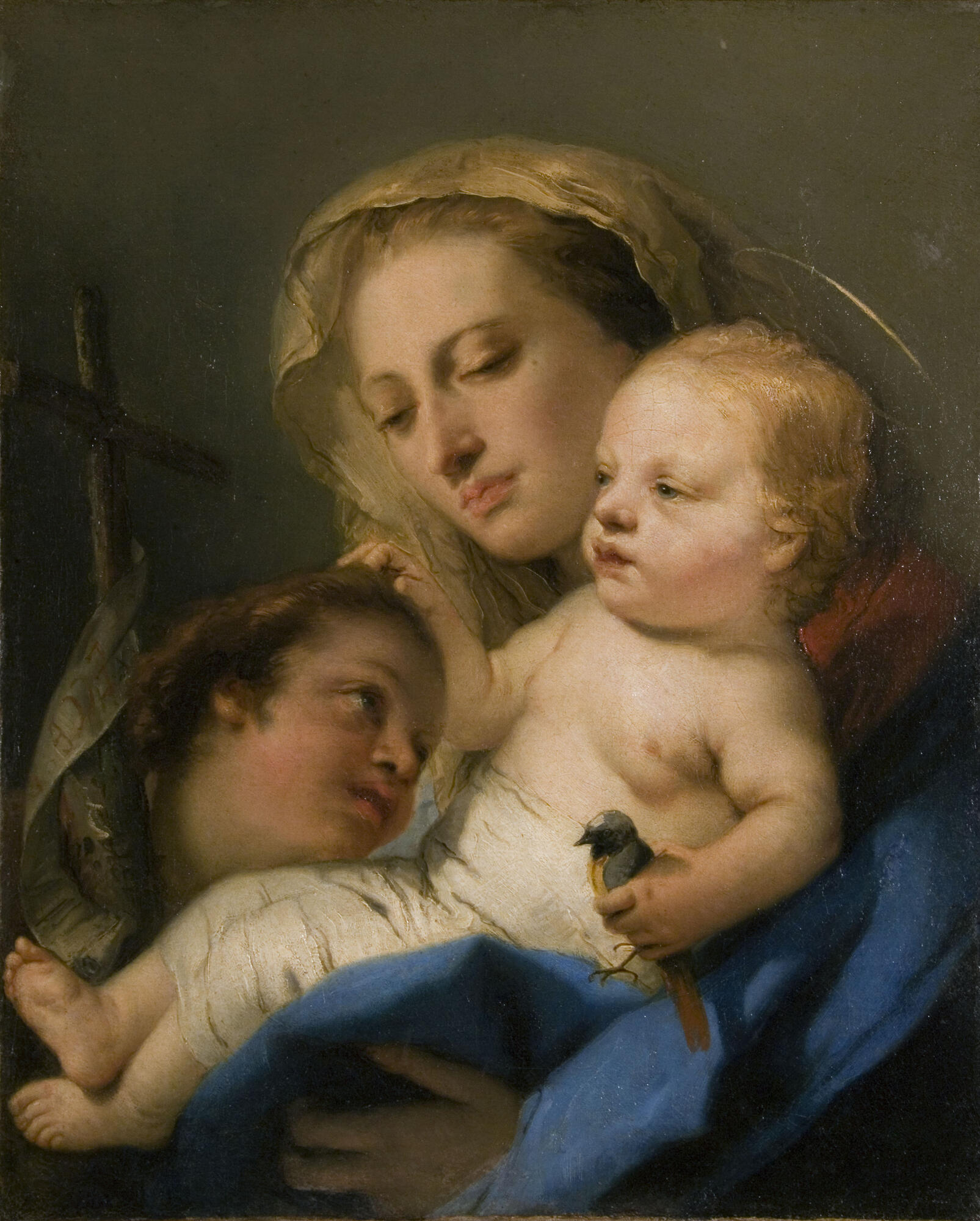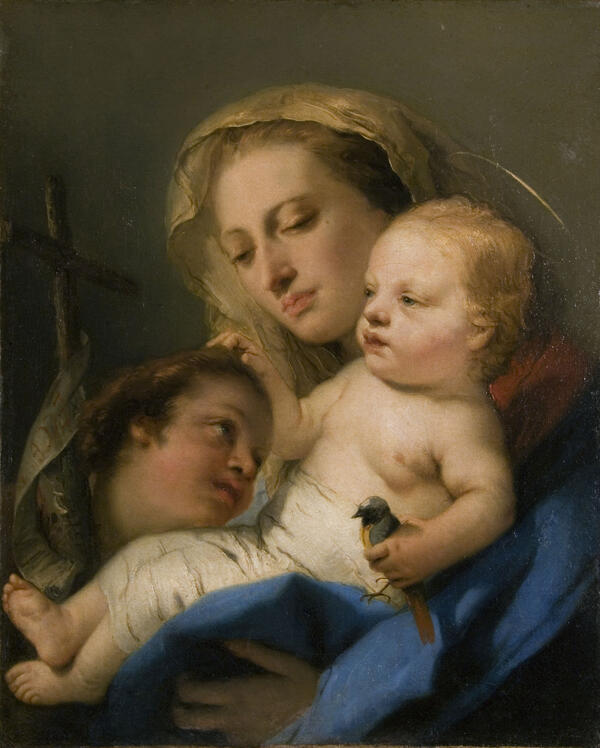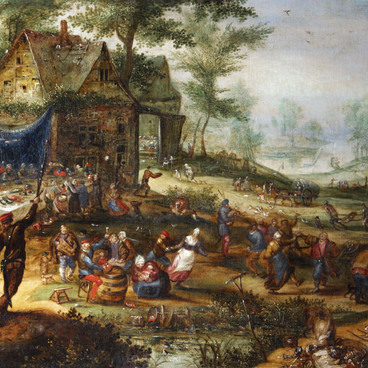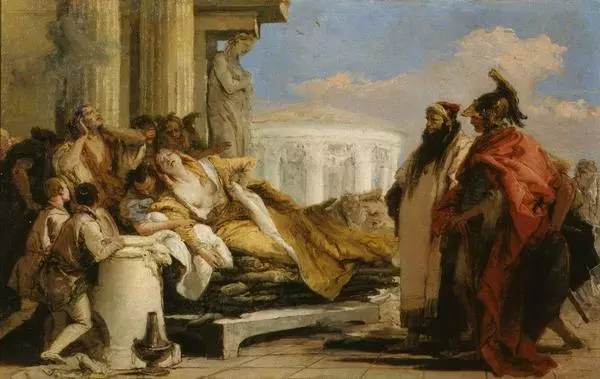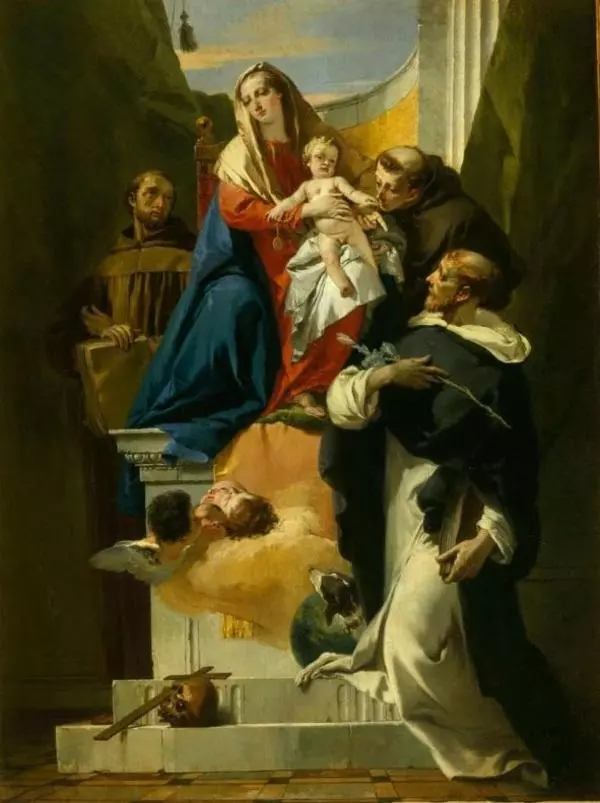The painting “Madonna with Infant and John the Baptist” (“Madonna of the Goldfinch”) by the Venetian master Giovanni Battista Tiepolo (1696-1770) came to the museum from the Karacharovsky estate of the Counts Uvarov in 1918. It has a sticker with an inscription that it comes from the collection of Alexey Sergeevich Uvarov: “A. U. No. 37”. So it has a very reliable provenance (origin). However, during the canvas restoration in the 1990s, the experts of the Grabar Art Restoration Center doubted this attribution. It was suggested that the picture was painted not by the brilliant Tiepolo himself, but by one of his sons, Domenico Tiepolo (1727-1804). To the delight of museum workers and art lovers, the authorship of Giovanni Battista Tiepolo was returned to the Murom painting in 2020. It was concluded by an international team of experts — specialists in his work. The picture was studied in relation to the preparation of a large–scale exhibition “Tiepolo — Venice in the North”, held in Helsinki at the Finnish National Gallery. Tiepolo’s masterpiece, which had not left the Murom Museum for a century, became the main sensation of a major European project. At the Helsinki vernissage, the painting occupied a central place, and its image graced the cover of the exhibition catalog.
The canvas of Giovanni Battista Tiepolo, the last universal European master, the successor of the titans of the Renaissance, presents a favorite plot of Western Renaissance masters — Madonna with Infant Christ. As in our picture, they often depicted the second child, a little older than Jesus, his relative on the mother’s side — the future John the Baptist. The Blessed Virgin on the canvas is exquisite, subtle and sad. The face with half-closed eyes looks haggard. Madonna’s skin is white, transparent, with a barely noticeable blush; it is like porcelain, it glows from the inside. The master achieves this effect by using various colorful tones on the face. Dark shadows on the temple and at the eyes make her skin radiant according to the laws of contrast. All the characters in the picture are touchingly connected with each other, their looks and gestures hide the secret of the coming suffering of Jesus Christ for humanity.
The canvas of Giovanni Battista Tiepolo, the last universal European master, the successor of the titans of the Renaissance, presents a favorite plot of Western Renaissance masters — Madonna with Infant Christ. As in our picture, they often depicted the second child, a little older than Jesus, his relative on the mother’s side — the future John the Baptist. The Blessed Virgin on the canvas is exquisite, subtle and sad. The face with half-closed eyes looks haggard. Madonna’s skin is white, transparent, with a barely noticeable blush; it is like porcelain, it glows from the inside. The master achieves this effect by using various colorful tones on the face. Dark shadows on the temple and at the eyes make her skin radiant according to the laws of contrast. All the characters in the picture are touchingly connected with each other, their looks and gestures hide the secret of the coming suffering of Jesus Christ for humanity.
